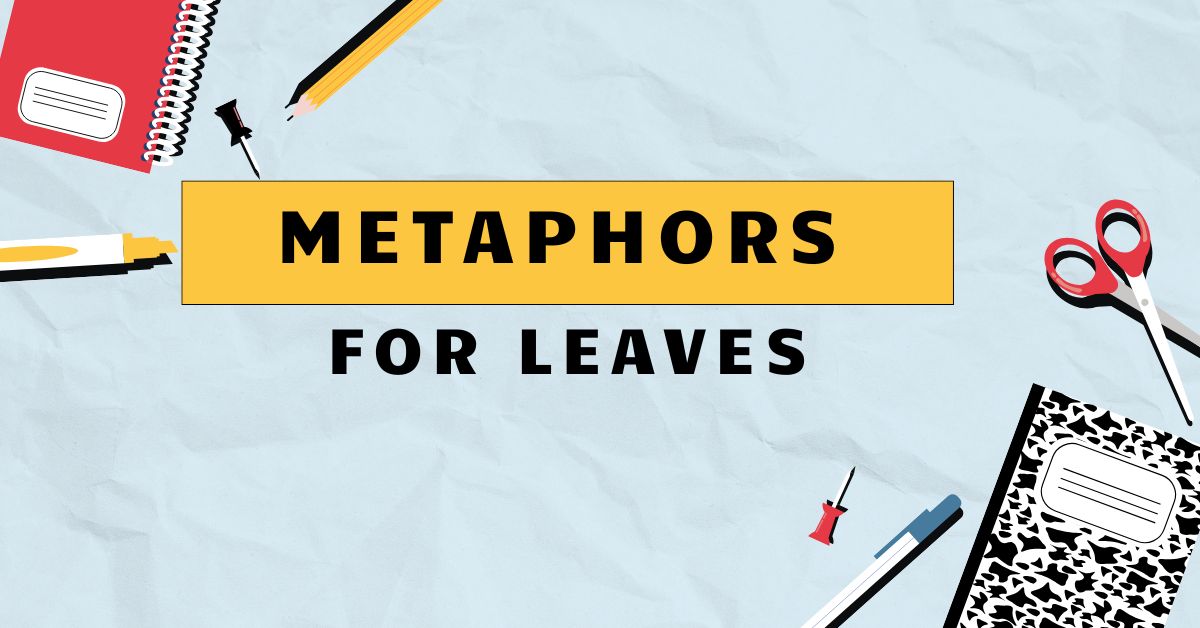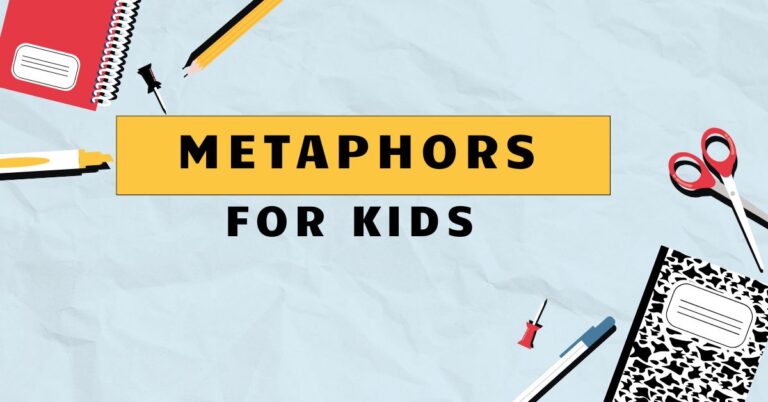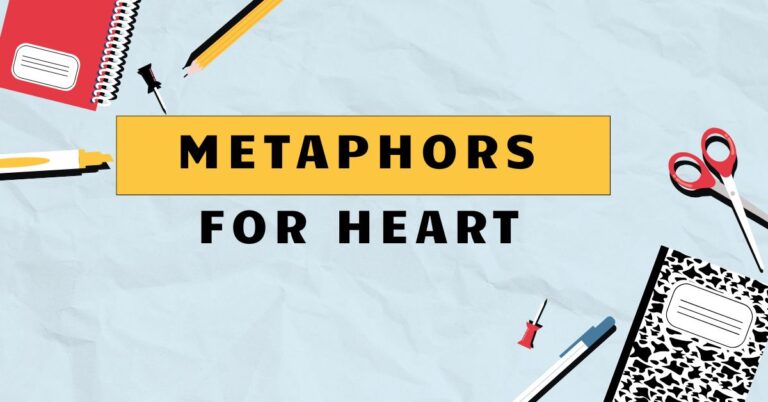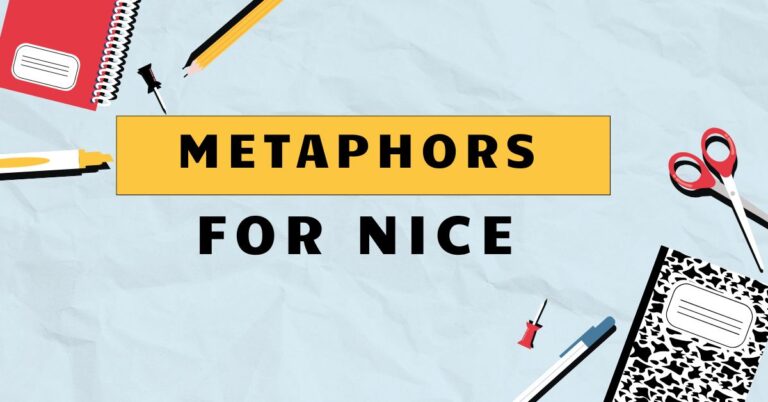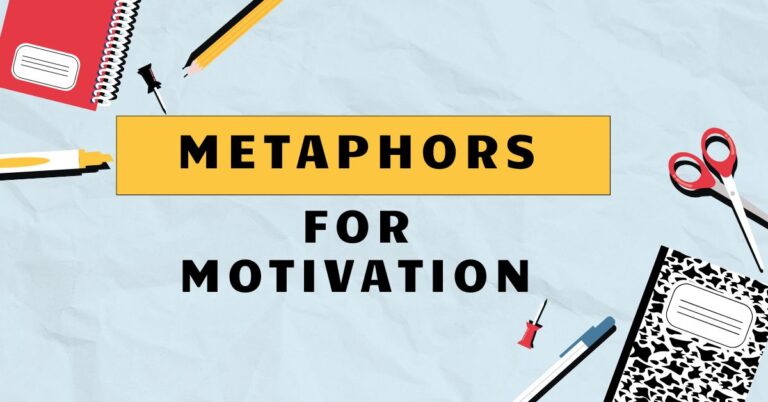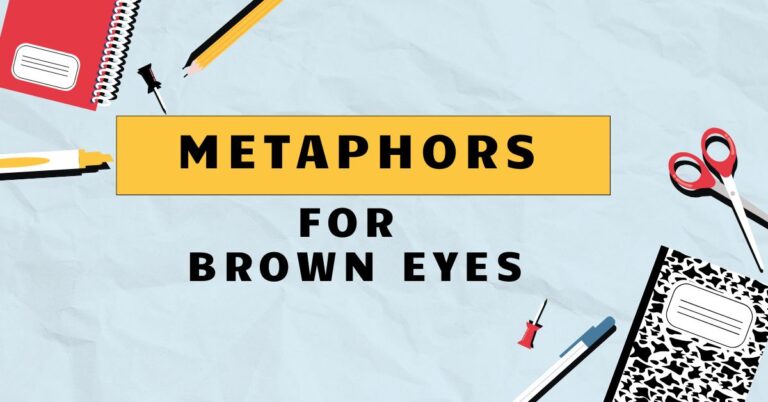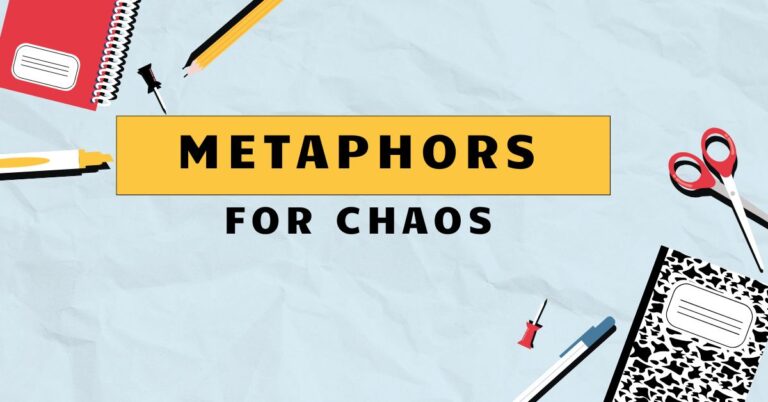47 Leaves as Language: Mastering Metaphors for Foliage
Metaphors breathe life into our language, transforming ordinary descriptions into vivid imagery. Understanding metaphors for leaves allows us to appreciate the rich tapestry of figurative language and to express ourselves with greater nuance and creativity.
This article explores the diverse range of metaphors used to describe leaves, their structural elements, and their specific usage. Whether you’re an English language learner, a seasoned writer, or simply someone who enjoys the beauty of language, this comprehensive guide will deepen your understanding and appreciation of metaphorical expressions involving leaves.
Table of Contents
- Introduction
- Definition of Metaphors for Leaves
- Structural Breakdown of Leaf Metaphors
- Types and Categories of Leaf Metaphors
- Examples of Leaf Metaphors
- Usage Rules for Leaf Metaphors
- Common Mistakes with Leaf Metaphors
- Practice Exercises
- Advanced Topics in Leaf Metaphors
- Frequently Asked Questions
- Conclusion
Definition of Metaphors for Leaves
A metaphor for leaves is a figure of speech that describes leaves by likening them to something else, without using “like” or “as.” This comparison is not literal; instead, it draws a connection based on shared characteristics, creating a more evocative and imaginative description. Metaphors allow us to convey complex ideas and emotions related to leaves in a concise and impactful way.
The effectiveness of a leaf metaphor depends on the audience’s understanding of the connection being made and the context in which it is used.
Metaphors for leaves serve several functions in language. They enhance imagery, making descriptions more vivid and memorable.
They add emotional depth, conveying feelings associated with leaves, such as joy, sorrow, or nostalgia. They also provide a fresh perspective, allowing us to see leaves in a new and insightful way.
The context in which a metaphor is used is crucial for its interpretation. A metaphor that works well in a poem might be inappropriate in a scientific report.
Classifying leaf metaphors can be done in several ways. One way is to categorize them based on the type of connection they make, such as metaphors of color, shape, or movement.
Another way is to group them according to the emotion they evoke, such as metaphors of peace, decay, or resilience. Understanding these classifications can help you to better appreciate the nuances of metaphorical language and to use metaphors more effectively in your own writing.
Structural Breakdown of Leaf Metaphors
The structure of a leaf metaphor typically involves two key elements: thetenorand thevehicle. The tenor is the subject being described (in this case, leaves), and the vehicle is the object or concept to which the subject is being compared.
The connection between the tenor and the vehicle is the basis of the metaphor. The effectiveness of a metaphor depends on the strength and clarity of this connection.
For instance, in the metaphor “Leaves are emerald tears,” the tenor is “leaves,” and the vehicle is “emerald tears.” The connection is based on the shared characteristics of color (emerald green) and shape (teardrop). The metaphor evokes a sense of sadness and preciousness associated with the leaves.
Understanding the tenor and vehicle helps in deconstructing and interpreting metaphors.
The implied comparison is what distinguishes a metaphor from a simile. While a simile explicitly states the comparison using “like” or “as” (e.g., “Leaves are like emeralds”), a metaphor implies the comparison directly (e.g., “Leaves are emeralds”).
This implicit comparison makes metaphors more powerful and evocative. Recognizing the difference between similes and metaphors is essential for mastering figurative language.
Types and Categories of Leaf Metaphors
Leaf metaphors can be categorized based on the type of comparison they make. Here are some common categories:
Personification
Personification is a type of metaphor where leaves are given human qualities or characteristics. This can involve attributing emotions, actions, or thoughts to leaves.
Personification can make descriptions more engaging and relatable.
For example, “The leaves whispered secrets to the wind” personifies the leaves by giving them the ability to whisper. This creates a sense of mystery and intimacy.
The effectiveness of personification depends on the appropriateness of the human qualities attributed to the leaves.
Comparison with Other Objects
Leaves can be compared to other objects based on shared characteristics such as shape, color, texture, or movement. These comparisons can range from simple to complex, depending on the desired effect.
Comparing leaves to money (“autumn leaves are nature’s currency”) highlights their value and abundance during the fall season. Similarly, comparing them to dancers (“leaves danced in the breeze”) emphasizes their graceful movement.
The choice of object depends on the specific aspect of the leaves that you want to emphasize.
Abstract Concepts
Leaves can also be used to represent abstract concepts such as time, change, or memory. These metaphors can be more subtle and require a deeper understanding of the symbolic meaning of leaves.
For instance, “Leaves are fleeting memories” connects the ephemeral nature of leaves with the transient nature of memories. This creates a sense of nostalgia and reflection.
The effectiveness of these metaphors depends on the audience’s ability to make the connection between the concrete image of leaves and the abstract concept.
Examples of Leaf Metaphors
The following tables provide examples of leaf metaphors categorized by their nature.
Table 1: Personification of Leaves
This table presents examples where leaves are given human qualities, enhancing descriptions with relatable and engaging imagery.
| Metaphor | Explanation |
|---|---|
| The leaves whispered secrets to the wind. | Leaves are given the ability to whisper, suggesting a sense of mystery and intimacy. |
| The leaves danced in the breeze, celebrating the arrival of autumn. | Leaves are personified as dancers, emphasizing their joyful and lively movement. |
| The leaves sighed as they fell from the trees, mourning the end of summer. | Leaves are given the human emotion of sighing, conveying a sense of sadness and loss. |
| The leaves gossiped amongst themselves, sharing stories of the forest. | Leaves are portrayed as gossiping, suggesting a vibrant community and exchange of information. |
| The leaves wept tears of dew in the early morning light. | Leaves are shown as weeping, creating a melancholic and reflective atmosphere. |
| The leaves stretched their arms towards the sun, yearning for warmth. | Leaves are depicted as stretching, emphasizing their desire for sunlight and nourishment. |
| The leaves grumbled underfoot, disturbed by the passing walkers. | Leaves are portrayed as grumbling, conveying a sense of annoyance and disruption. |
| The leaves embraced the earth, providing comfort and shelter to the creatures below. | Leaves are shown as embracing, highlighting their role in nurturing and protecting the environment. |
| The leaves chuckled in the rain, enjoying the refreshing shower. | Leaves are depicted as chuckling, emphasizing their delight in the natural elements. |
| The leaves pondered the mysteries of the universe, their colors deepening with thought. | Leaves are personified as pondering, suggesting a contemplative and thoughtful presence. |
| The leaves boasted their vibrant hues, competing for attention in the forest. | Leaves are portrayed as boasting, conveying a sense of pride and display. |
| The leaves sulked in the shadows, hiding from the harsh sunlight. | Leaves are depicted as sulking, emphasizing their vulnerability and need for shelter. |
| The leaves plotted their descent, planning a colorful carpet for the forest floor. | Leaves are shown as plotting, highlighting their strategic and purposeful actions. |
| The leaves worried about the coming winter, their vibrant colors fading with anxiety. | Leaves are portrayed as worrying, conveying a sense of concern and anticipation. |
| The leaves danced attendance on the wind, following its every whim with grace. | Leaves are depicted as dancing attendance, emphasizing their subservience and elegance. |
| The leaves complained about the cold, their edges curling in discomfort. | Leaves are portrayed as complaining, conveying a sense of physical distress. |
| The leaves reveled in the sunlight, basking in its golden warmth. | Leaves are shown as reveling, emphasizing their enjoyment and appreciation of the sun. |
| The leaves dreamed of spring, their dormant buds awaiting the return of life. | Leaves are personified as dreaming, suggesting hope and anticipation for the future. |
| The leaves remembered the songs of summer, their rustling a faint echo of the past. | Leaves are depicted as remembering, highlighting their connection to the seasons and the passage of time. |
| The leaves greeted the dawn with a chorus of rustles, welcoming the new day. | Leaves are portrayed as greeting, emphasizing their active participation in the natural world. |
Table 2: Comparison of Leaves with Other Objects
This table offers examples that compare leaves to various objects based on shared characteristics, creating vivid imagery.
| Metaphor | Explanation |
|---|---|
| Autumn leaves are nature’s currency. | Leaves are compared to money, emphasizing their value and abundance during the fall season. |
| The fallen leaves formed a golden carpet on the ground. | Leaves are likened to a carpet, highlighting their covering and decorative effect. |
| Leaves are emerald tears, glistening in the sunlight. | Leaves are compared to emerald tears, emphasizing their color and preciousness. |
| The leaves were delicate paper, rustling with ancient stories. | Leaves are likened to paper, suggesting fragility and the potential for carrying narratives. |
| Leaves are stained-glass windows, filtering the sunlight into mosaic patterns. | Leaves are compared to stained-glass, emphasizing their colorful and artistic effect. |
| The leaves were fluttering flags, signaling the arrival of autumn. | Leaves are likened to flags, highlighting their role as indicators of seasonal change. |
| Leaves are nature’s confetti, celebrating the end of summer. | Leaves are compared to confetti, emphasizing their celebratory and festive nature. |
| The leaves were dancing flames, flickering in the autumn breeze. | Leaves are likened to flames, highlighting their vibrant color and dynamic movement. |
| Leaves are nature’s blankets, providing warmth and shelter to the earth. | Leaves are compared to blankets, emphasizing their protective and comforting qualities. |
| The leaves were scattered jewels, adorning the forest floor with their beauty. | Leaves are likened to jewels, highlighting their preciousness and aesthetic appeal. |
| Leaves are nature’s sails, catching the wind and carrying seeds to new lands. | Leaves are compared to sails, emphasizing their role in dispersal and exploration. |
| The leaves were spinning tops, twirling and whirling in the autumn gusts. | Leaves are likened to spinning tops, highlighting their playful and dynamic movement. |
| Leaves are nature’s umbrellas, shielding the forest floor from the rain. | Leaves are compared to umbrellas, emphasizing their protective and sheltering qualities. |
| The leaves were whispering coins, jingling softly in the gentle breeze. | Leaves are likened to coins, highlighting their sound and potential value. |
| Leaves are nature’s tapestries, woven with intricate patterns of veins and colors. | Leaves are compared to tapestries, emphasizing their complexity and artistic design. |
| The leaves were falling stars, descending gracefully to the earth below. | Leaves are likened to falling stars, highlighting their beauty and ephemeral nature. |
| Leaves are nature’s maps, charting the course of rivers and the growth of the forest. | Leaves are compared to maps, emphasizing their role in navigation and understanding. |
| The leaves were fluttering butterflies, dancing on the wind’s gentle breath. | Leaves are likened to butterflies, highlighting their delicate and graceful movement. |
| Leaves are nature’s clocks, marking the passage of time with their changing colors. | Leaves are compared to clocks, emphasizing their role in indicating seasonal changes. |
| The leaves were scattered puzzle pieces, waiting to be assembled into a complete picture. | Leaves are likened to puzzle pieces, highlighting their individual uniqueness and collective unity. |
| Leaves are nature’s postcards, sending messages of beauty and change to the world. | Leaves are compared to postcards, emphasizing their role in communication and sharing. |
| The leaves were vibrant paint strokes, adding color and texture to the autumn landscape. | Leaves are likened to paint strokes, highlighting their artistic and transformative effect. |
| Leaves are nature’s books, filled with stories of growth, decay, and renewal. | Leaves are compared to books, emphasizing their potential for knowledge and wisdom. |
| The leaves were rustling skirts, swishing and swaying in the autumn breeze. | Leaves are likened to skirts, highlighting their movement and elegance. |
Table 3: Metaphors for Leaves based on Abstract Concepts
This table presents metaphors that use leaves to represent abstract concepts, such as time, change, and memory, adding depth to descriptions.
| Metaphor | Explanation |
|---|---|
| Leaves are fleeting memories, fading with the passage of time. | Leaves represent the ephemeral nature of memories, highlighting their transience. |
| The falling leaves are symbols of change and transition. | Leaves represent the continuous cycle of change and the process of moving from one state to another. |
| Leaves are whispers of the past, rustling with forgotten stories. | Leaves represent echoes of the past, suggesting a connection to history and tradition. |
| Leaves are lessons in resilience, weathering storms and adapting to new conditions. | Leaves represent the ability to recover quickly from difficulties, emphasizing strength and adaptability. |
| Leaves are metaphors for life, unfolding, flourishing, and eventually returning to the earth. | Leaves represent the cycle of life, from birth and growth to decay and death. |
| Leaves are reminders of impermanence, urging us to appreciate the present moment. | Leaves represent the transient nature of existence, emphasizing the importance of living in the now. |
| Leaves are emblems of hope, promising renewal and rebirth in the coming spring. | Leaves represent optimism and the expectation of positive outcomes, particularly during difficult times. |
| Leaves are reflections of our own mortality, reminding us of our limited time on earth. | Leaves represent the awareness of death and the finite nature of human existence. |
| Leaves are symbols of growth, reaching towards the sky and expanding their horizons. | Leaves represent personal development and the pursuit of new experiences and knowledge. |
| Leaves are echoes of nature’s wisdom, teaching us the importance of balance and harmony. | Leaves represent the understanding and application of natural principles, emphasizing equilibrium and coordination. |
| Leaves are guardians of the forest, protecting its secrets and preserving its beauty. | Leaves represent protection and preservation, highlighting their role in maintaining the integrity of the forest. |
| Leaves are messengers of autumn, announcing the arrival of cooler days and shorter nights. | Leaves represent communication and herald seasonal changes, emphasizing transition and anticipation. |
| Leaves are dancers of the wind, swaying to the rhythm of nature’s music. | Leaves represent harmony and movement, highlighting their synchronicity with natural elements. |
| Leaves are dreamers of spring, envisioning a world of green and abundance. | Leaves represent vision and aspiration, emphasizing the anticipation of future growth and prosperity. |
| Leaves are artists of the forest, painting the landscape with vibrant colors and intricate patterns. | Leaves represent creativity and aesthetic expression, highlighting their role in enhancing the beauty of the environment. |
| Leaves are storytellers of the seasons, narrating tales of growth, decay, and renewal. | Leaves represent narrative and cyclical processes, emphasizing the recurring themes of life and nature. |
| Leaves are teachers of patience, demonstrating the slow and steady rhythm of nature’s processes. | Leaves represent perseverance and measured progress, highlighting the importance of gradual development. |
| Leaves are mirrors of the sky, reflecting its changing moods and atmospheric conditions. | Leaves represent reflection and adaptation, emphasizing their responsiveness to environmental influences. |
| Leaves are whispers of hope, promising the return of life and warmth after the cold of winter. | Leaves represent optimism and anticipation, highlighting the cyclical nature of seasons and life. |
| Leaves are guardians of the earth, returning nutrients to the soil and nourishing new growth. | Leaves represent protection and sustenance, emphasizing their role in ecological balance and renewal. |
Usage Rules for Leaf Metaphors
When using leaf metaphors, it’s crucial to ensure that the comparison is both relevant and effective. The connection between the leaves (tenor) and the object or concept (vehicle) should be clear and logical.
Avoid forced or illogical comparisons that might confuse the reader.
Consider the context in which the metaphor is being used. A metaphor that works well in a poem might be inappropriate in a scientific report.
Adapt your language to suit the audience and the purpose of your writing. Overusing metaphors can dilute their impact.
Use them sparingly and strategically to enhance your writing.
Ensure consistency in your metaphorical language. Avoid mixing metaphors that create contradictory or confusing images.
For example, don’t describe leaves as both “golden coins” and “fragile butterflies” in the same sentence, as these images might clash. Maintaining consistency ensures clarity and coherence.
Common Mistakes with Leaf Metaphors
One common mistake is using clichéd metaphors that have lost their impact through overuse. For example, saying “Leaves are like money” is a clichéd comparison.
Strive for originality and creativity in your metaphorical language.
Another mistake is creating mixed metaphors, where the comparison is illogical or contradictory. For example:
| Incorrect | Correct |
|---|---|
| The leaves are a symphony of whispers, drowning in a sea of silence. | The leaves are a symphony of whispers, filling the forest with music. |
In the incorrect example, “symphony of whispers” and “drowning in a sea of silence” create a contradictory image. The correct example maintains a consistent image of sound and music.
Misunderstanding the connotation of words can also lead to ineffective metaphors. For example, if you describe leaves as “serpents of autumn,” the negative connotation of “serpents” might not be appropriate, unless you intend to convey a sense of danger or deception.
Practice Exercises
Test your understanding of leaf metaphors with the following exercises.
Exercise 1: Identify the Metaphor
Identify the metaphor in each sentence.
| Question | Answer |
|---|---|
| 1. The leaves were nature’s confetti, celebrating the end of summer. | nature’s confetti |
| 2. Fallen leaves are golden memories scattered across the lawn. | golden memories |
| 3. The leaves whispered secrets to the wind. | whispered secrets |
| 4. Leaves are emerald tears, glistening in the sunlight. | emerald tears |
| 5. Autumn leaves are nature’s currency. | nature’s currency |
| 6. The leaves danced in the breeze, celebrating the arrival of autumn. | danced in the breeze |
| 7. The leaves sighed as they fell from the trees, mourning the end of summer. | sighed |
| 8. The leaves were delicate paper, rustling with ancient stories. | delicate paper |
| 9. Leaves are fleeting memories, fading with the passage of time. | fleeting memories |
| 10. The leaves are lessons in resilience, weathering storms and adapting to new conditions. | lessons in resilience |
Exercise 2: Create Your Own Metaphors
Create a metaphor for leaves based on the given prompts.
| Prompt | Answer |
|---|---|
| 1. Leaves and Time | Leaves are the ticking clocks of the forest, each falling leaf a second passing. |
| 2. Leaves and Money | The autumn leaves are nature’s savings, accumulating in golden piles. |
| 3. Leaves and Music | The rustling leaves are the forest’s orchestra, playing a symphony of autumn. |
| 4. Leaves and Memories | Leaves are old photographs, each one fading into the past. |
| 5. Leaves and Stories | Every leaf is a page from the forest’s diary, filled with untold stories. |
| 6. Leaves and Dreams | Leaves are the forest’s dreams, fluttering down to earth in vibrant colors. |
| 7. Leaves and Emotions | Leaves are the heart of the forest, changing colors with every passing emotion. |
| 8. Leaves and Warriors | Leaves are the forest’s soldiers, bravely facing the wind and rain. |
| 9. Leaves and Dancers | Leaves are the forest’s ballerinas, twirling gracefully in the breeze. |
| 10. Leaves and Travelers | Leaves are the forest’s nomads, wandering far and wide on the wings of the wind. |
Exercise 3: Correct the Incorrect Metaphors
Identify and correct the incorrect metaphors.
| Question | Answer |
|---|---|
| 1. The leaves are a mountain of whispers, silent as a roar. | The leaves are a mountain of whispers, filling the air with secrets. |
| 2. Leaves are golden tears, hard as stone. | Leaves are golden tears, soft as velvet. |
| 3. The leaves are flying carpets, stuck on the ground. | The leaves are flying carpets, soaring through the sky. |
| 4. Leaves are nature’s screams, quiet as a mouse. | Leaves are nature’s whispers, soft as a breeze. |
| 5. The leaves are dancing stones, heavy as feathers. | The leaves are dancing feathers, light as air. |
| 6. Leaves are nature’s currency, worthless as gold. | Leaves are nature’s currency, precious as gold. |
| 7. The leaves are fleeting memories, permanent as a rock. | The leaves are fleeting memories, ephemeral as a dream. |
| 8. Leaves are lessons in resilience, fragile as steel. | Leaves are lessons in resilience, strong as roots. |
| 9. The leaves are whispers of the past, loud as thunder. | The leaves are whispers of the past, quiet as a sigh. |
| 10. Leaves are symbols of growth, shrinking towards the earth. | Leaves are symbols of growth, reaching towards the sky. |
Advanced Topics in Leaf Metaphors
For advanced learners, consider exploring the use of extended metaphors, where a single metaphor is developed over several sentences or paragraphs. This requires careful planning and consistent imagery.
Also, analyze the use of metaphors in famous literary works that feature leaves prominently, such as poems by Robert Frost or essays by Ralph Waldo Emerson. This can provide insights into the creative possibilities of metaphorical language.
Investigate the cultural significance of leaves in different societies and how this influences the metaphors used to describe them. For example, the maple leaf is a symbol of Canada, and this is reflected in Canadian literature and art.
Finally, experiment with creating your own original and innovative leaf metaphors, pushing the boundaries of figurative language and expressing your unique perspective.
Consider the etymology and historical context surrounding certain leaf metaphors. Understanding the origins of these phrases can enrich your appreciation for their nuances and cultural significance.
For example, exploring the historical use of “olive branch” as a symbol of peace can provide deeper insights into its metaphorical power.
Frequently Asked Questions
Here are some frequently asked questions about leaf metaphors.
- What is the difference between a metaphor and a simile?
- How can I create original leaf metaphors?
- Why are metaphors important in writing?
- How do I avoid using clichéd leaf metaphors?
- What are some common themes in leaf metaphors?
- Can metaphors be used in scientific writing?
- How does cultural context influence leaf metaphors?
- What is an extended metaphor, and how is it used?
A metaphor directly compares two unlike things without using “like” or “as,” while a simile uses “like” or “as” to make the comparison explicit. For example, “Leaves are emeralds” is a metaphor, while “Leaves are like emeralds” is a simile.
The direct comparison in a metaphor makes it more forceful and evocative.
To create original leaf metaphors, start by observing leaves closely and identifying their unique characteristics. Then, brainstorm objects or concepts that share similar characteristics.
Try to find connections that are not immediately obvious but are still logical and relevant. Experiment with different combinations and word choices until you find a metaphor that resonates with you.
Metaphors add depth, imagery, and emotional resonance to writing. They can make descriptions more vivid and memorable, and they can help to convey complex ideas in a concise and impactful way.
Metaphors also allow writers to express their unique perspective and creativity.
To avoid using clichéd leaf metaphors, steer clear of overused comparisons such as “Leaves are like money” or “Leaves are like snowflakes.” Instead, focus on finding fresh and original connections. Read widely and pay attention to the metaphors used by other writers.
Practice generating your own metaphors and seek feedback from others.
Common themes in leaf metaphors include change, transition, beauty, fragility, resilience, and the cycle of life. Leaves are often used to represent the ephemeral nature of time and the transient nature of human existence.
They can also symbolize hope, renewal, and the connection between humanity and nature.
While scientific writing typically emphasizes precision and objectivity, metaphors can be used sparingly and strategically to enhance clarity and engagement. However, it’s important to ensure that the metaphor is accurate and does not distort the scientific facts.
Metaphors should be used to illustrate complex concepts, not to replace rigorous analysis.
Cultural context plays a significant role in shaping leaf metaphors. Different cultures may associate different meanings and symbolism with leaves, depending on their environment, history, and traditions.
For example, the maple leaf is a powerful symbol of Canadian identity, while the olive branch is a universal symbol of peace. Understanding these cultural nuances is essential for interpreting and using leaf metaphors effectively.
An extended metaphor is a metaphor that is developed over several sentences or paragraphs. It involves drawing multiple connections between the tenor and the vehicle, creating a more complex and nuanced comparison.
Extended metaphors can be used to explore a theme in depth, to create a sustained mood or atmosphere, or to reveal deeper insights into the subject being described. They require careful planning and consistent imagery to be effective.
Conclusion
Mastering metaphors for leaves unlocks a deeper appreciation for figurative language and enhances your ability to express yourself with creativity and precision. By understanding the structural elements, types, and usage rules of leaf metaphors, you can avoid common mistakes and create original and impactful descriptions.
Remember to consider the context, audience, and cultural significance of your metaphors to ensure their effectiveness. Practice regularly with the exercises provided, and continue to explore the rich world of metaphorical language to refine your skills and expand your expressive range.
The journey of learning and applying leaf metaphors is ongoing. Embrace the opportunity to observe, analyze, and experiment with language, and you’ll find that your writing becomes more vivid, engaging, and meaningful.
Keep exploring, keep practicing, and keep bringing the beauty of nature into your words.

